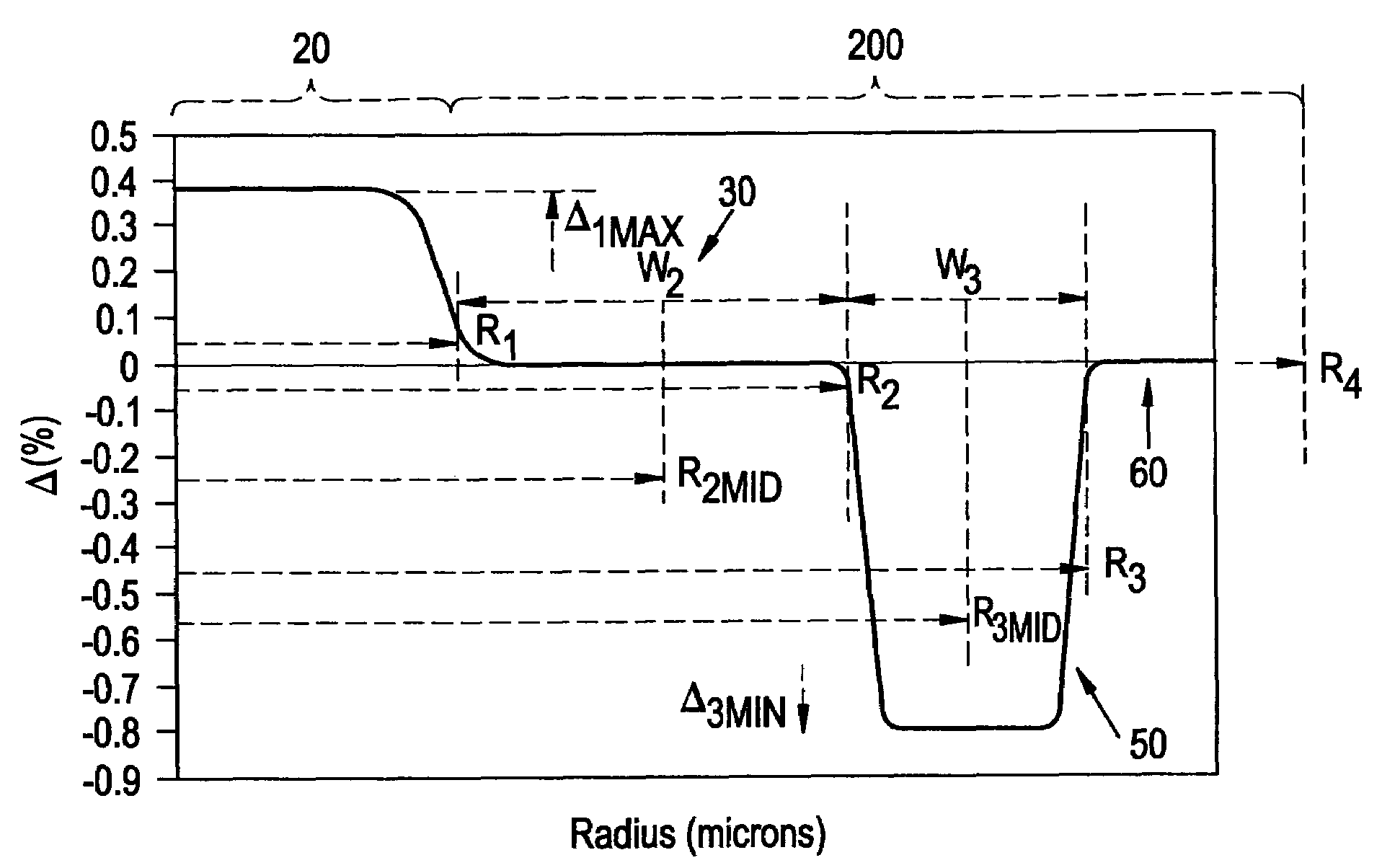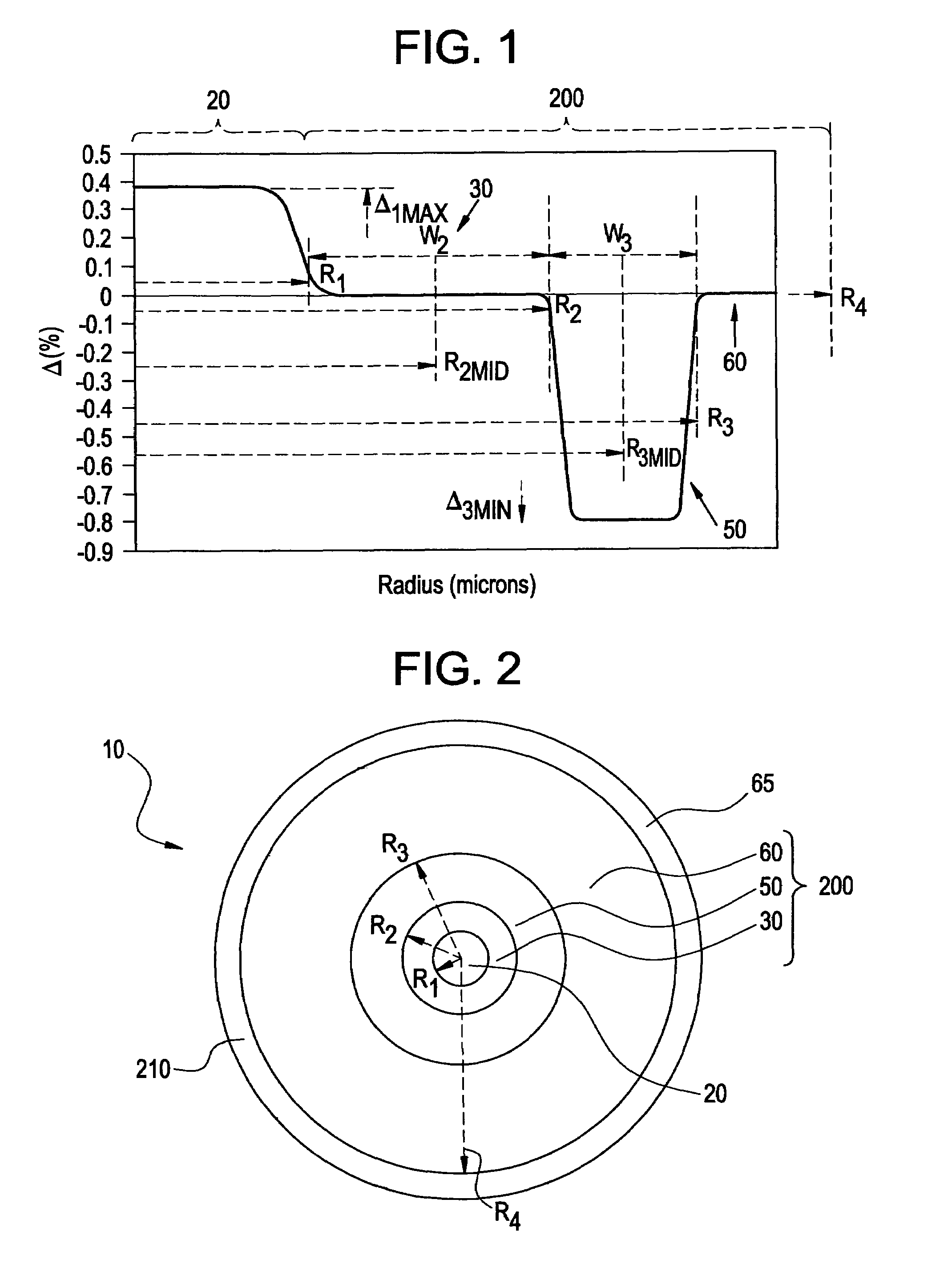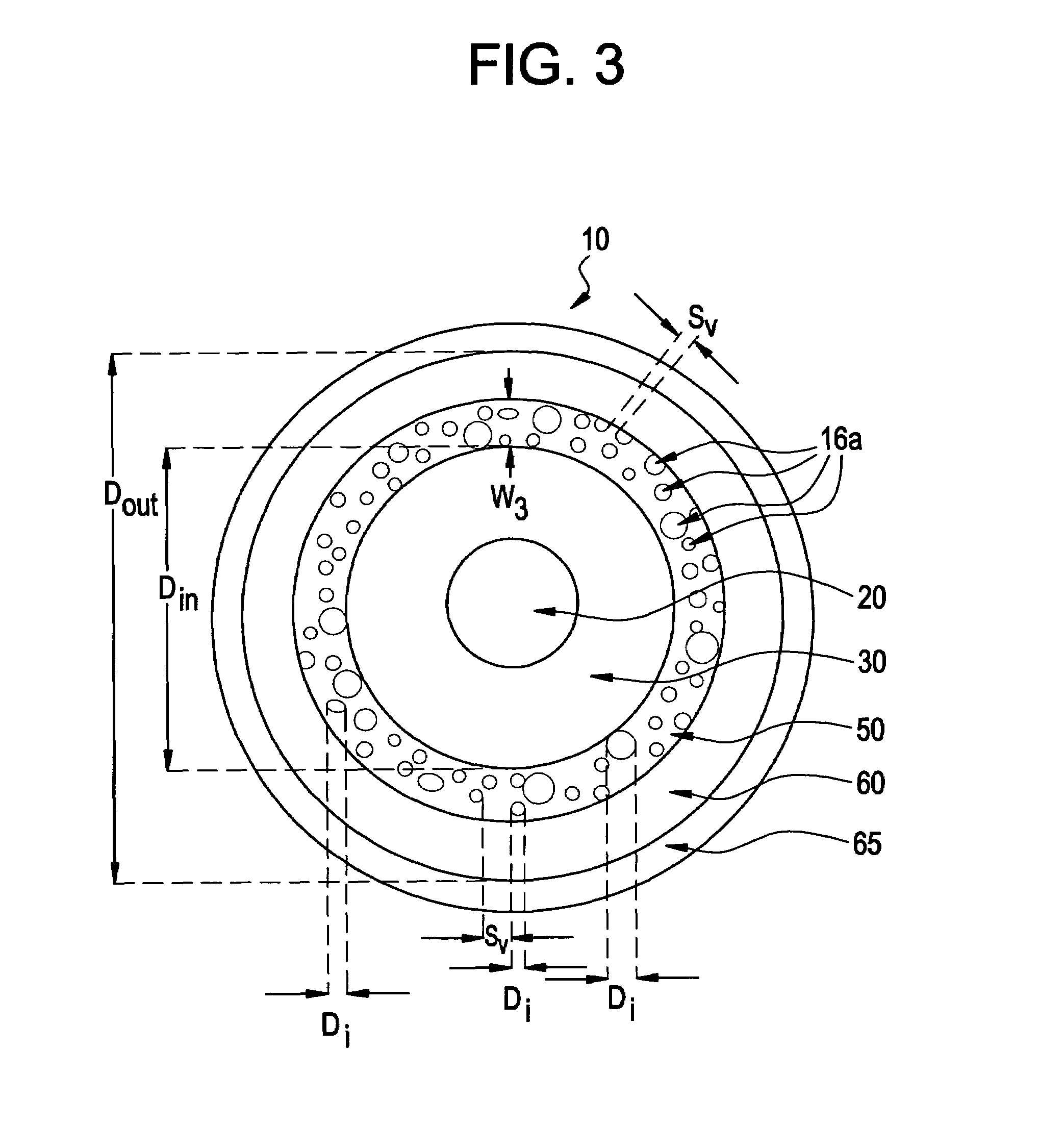Large effective area fiber
a fiber and effective area technology, applied in the field of optical fibers, can solve the problems of reducing non-linear optical effects, and affecting the performance of optical fibers with multi-layer cores/claddings,
- Summary
- Abstract
- Description
- Claims
- Application Information
AI Technical Summary
Benefits of technology
Problems solved by technology
Method used
Image
Examples
Embodiment Construction
[0032]Additional features and advantages of the invention will be set forth in the detailed description which follows and will be apparent to those skilled in the art from the description or recognized by practicing the invention as described in the following description together with the claims and appended drawings.
[0033]The “refractive index profile” is the relationship between refractive index or relative refractive index and waveguide fiber radius.
[0034]The “relative refractive index percent” is defined as Δ %=100×(ni2−nc2) / 2ni2, where ni is the maximum refractive index in region i, unless otherwise specified, and nc is the average refractive index of the third annular region 60 (outer region) of the cladding. As used herein, the relative refractive index is represented by Δ and its values are given in units of “%”, unless otherwise specified. In cases where the refractive index of a region is less than the average refractive index of the third annular region 60, the relative i...
PUM
 Login to View More
Login to View More Abstract
Description
Claims
Application Information
 Login to View More
Login to View More - R&D
- Intellectual Property
- Life Sciences
- Materials
- Tech Scout
- Unparalleled Data Quality
- Higher Quality Content
- 60% Fewer Hallucinations
Browse by: Latest US Patents, China's latest patents, Technical Efficacy Thesaurus, Application Domain, Technology Topic, Popular Technical Reports.
© 2025 PatSnap. All rights reserved.Legal|Privacy policy|Modern Slavery Act Transparency Statement|Sitemap|About US| Contact US: help@patsnap.com



